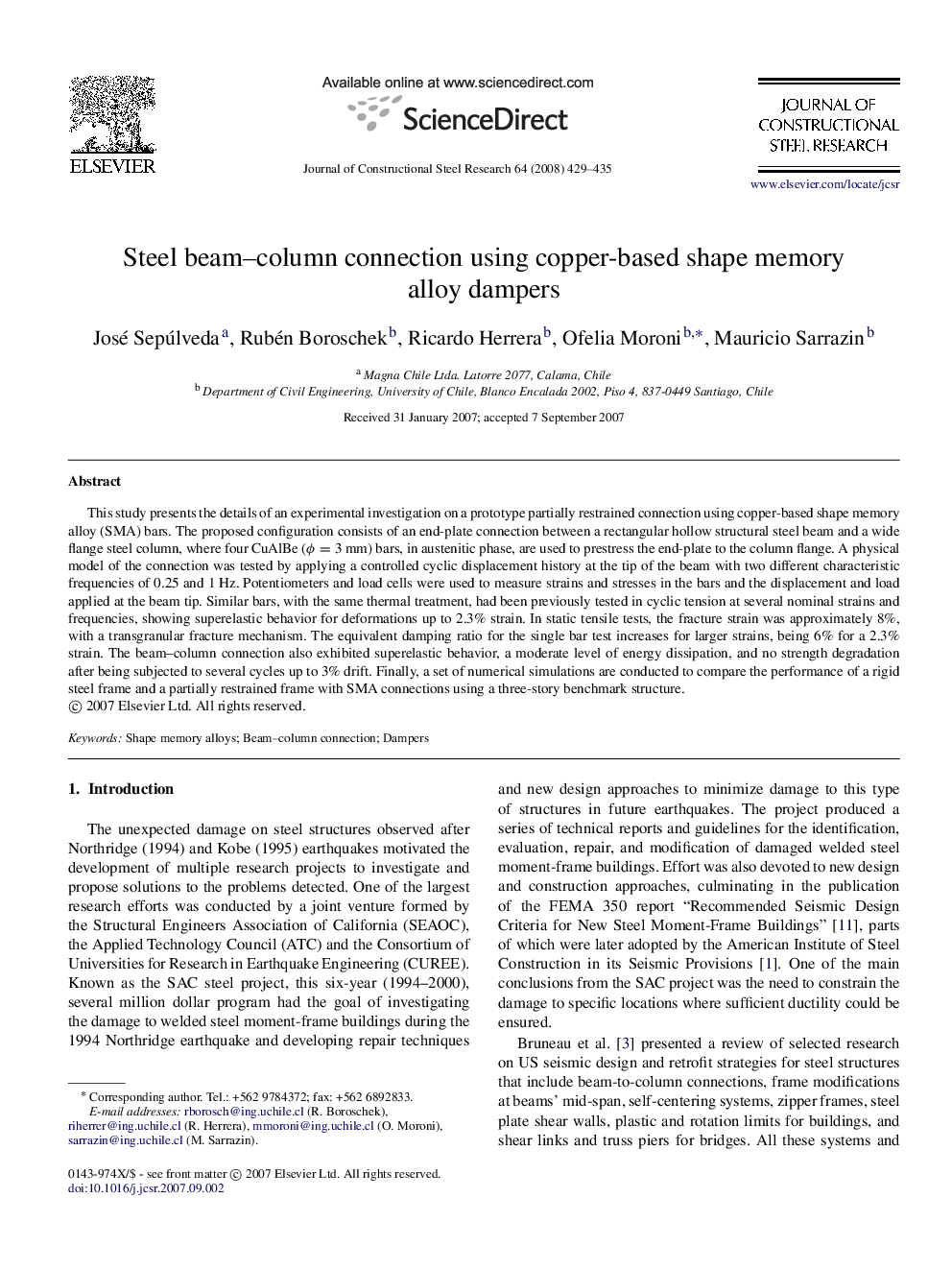| Article ID | Journal | Published Year | Pages | File Type |
|---|---|---|---|---|
| 285651 | Journal of Constructional Steel Research | 2008 | 7 Pages |
This study presents the details of an experimental investigation on a prototype partially restrained connection using copper-based shape memory alloy (SMA) bars. The proposed configuration consists of an end-plate connection between a rectangular hollow structural steel beam and a wide flange steel column, where four CuAlBe (ϕ=3mm) bars, in austenitic phase, are used to prestress the end-plate to the column flange. A physical model of the connection was tested by applying a controlled cyclic displacement history at the tip of the beam with two different characteristic frequencies of 0.25 and 1 Hz. Potentiometers and load cells were used to measure strains and stresses in the bars and the displacement and load applied at the beam tip. Similar bars, with the same thermal treatment, had been previously tested in cyclic tension at several nominal strains and frequencies, showing superelastic behavior for deformations up to 2.3% strain. In static tensile tests, the fracture strain was approximately 8%, with a transgranular fracture mechanism. The equivalent damping ratio for the single bar test increases for larger strains, being 6% for a 2.3% strain. The beam–column connection also exhibited superelastic behavior, a moderate level of energy dissipation, and no strength degradation after being subjected to several cycles up to 3% drift. Finally, a set of numerical simulations are conducted to compare the performance of a rigid steel frame and a partially restrained frame with SMA connections using a three-story benchmark structure.
